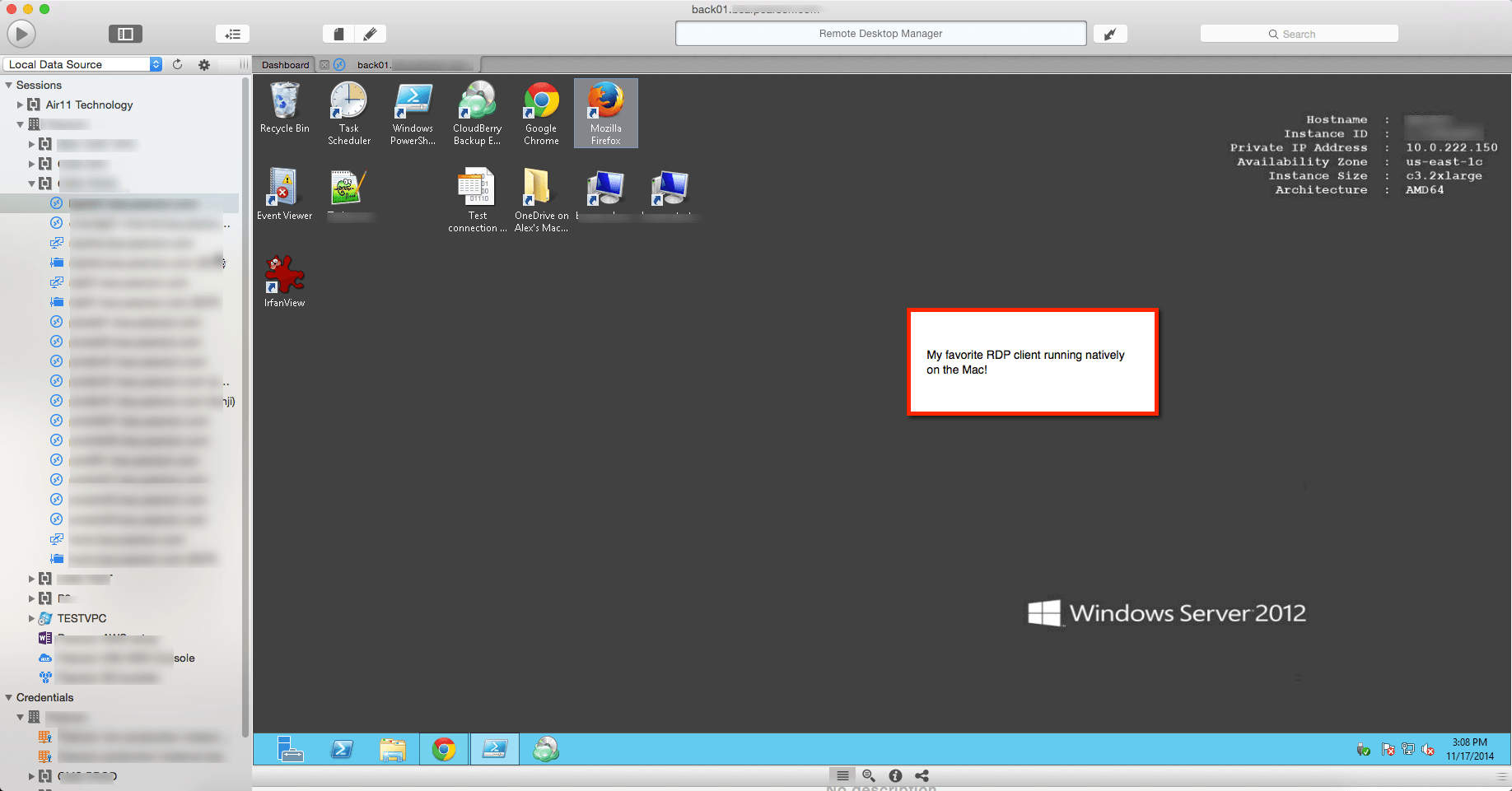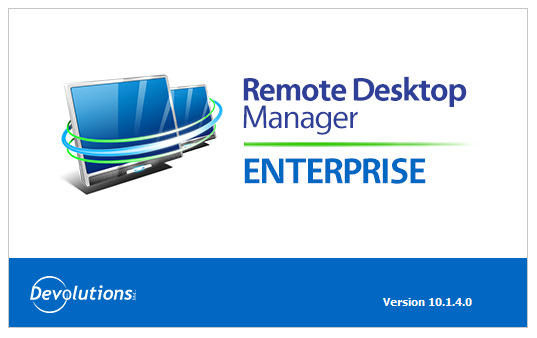
- #MAC REMOTE DESKTOP MANAGER INSTALL#
- #MAC REMOTE DESKTOP MANAGER UPDATE#
- #MAC REMOTE DESKTOP MANAGER SOFTWARE#
- #MAC REMOTE DESKTOP MANAGER DOWNLOAD#
- #MAC REMOTE DESKTOP MANAGER FREE#
Remote Desktop Connection Client 2 also takes advantage of the new Helpviewer and improved help topics for quick access to fresh online product help from within the application.
#MAC REMOTE DESKTOP MANAGER SOFTWARE#
Microsoft Error Reporting Tool and Microsoft AutoUpdate are included so you can anonymously submit data on software related issues and get software updates as soon as they are available. Create your own keyboard shortcuts and even access and change preferences during active sessions.Īccess and print from Windows applications to any printer that can be configured from your Intel- or PowerPC-based Macs. Since it works with Vista and is a Universal application, Remote Desktop Connection Client 2 is compatible with the latest technologies on Windows and Mac platforms.Ī redesigned user interface makes this application more customizable. New Multiple Session Support gives Mac users simultaneous access to multiple Windows-based PCs or to a network server that hosts remote applications and files. That should be all there is to it! Many thanks to all those on who proposed various solutions.With Remote Desktop Connection Client, you can quickly, simply and securely connect to Windows-based PCs to access Windows-based files, applications, devices, and networks from your Mac. (34000) Error Domain=MCCloudConfigurationErrorDomain Code=34000 "The device failed to request configuration from the cloud." UserInfo= Type Y Ĭheck to see whether the enrollment calls are being blocked by typing 'sudo profiles show -type enrollment' Now you will be asked to asked whether you want to save and to enter Y for yes and N for No. Use Arrow key on your keyboard to move the cursor to the last line and type the following lines: Type in terminal: sudo nano /private/etc/hosts. I googled editing the hosts file, and the trick appears to be to use the nano editor: You can edit the hosts file in Terminal while logged in normally, although not using those "echo" commands (even typing 'sudo echo "0.0.0.0 " > hosts' gave the error 'permission denied: hosts'). There's no need to reboot into Recovery Mode, disable SIP or FileVault, or move/disable the plists controlling the daemons related to device enrollment and management.

Here's what worked for me:Įditing the hosts file appears to have worked all by itself. I believe that there's an easier way, one that does incorporate some of the steps above. When all done and in the admin account it was possible to connect internet and have been rebooting it numerus times now and did not get the enrollment prompt again. Skip it until you can click "Continue without an internet connection" and complete setting up the admin account and other features as prefered. Type carefully the next commands to send inquiries to blackholeĮcho "0.0.0.0 " > hostsĮcho "0.0.0.0 " > hostsĮcho "0.0.0.0 " > hostsĪs going through setup, when prompted to establish a internet connection do not allow the connection.

Mv LaunchDaemons/* LaunchDaemons.disabled/ Mkdir LaunchDaemons.disabled LaunchAgents.disabled Type carefully the following commands in Terminal to prevent the MDM robots starting up

#MAC REMOTE DESKTOP MANAGER UPDATE#
With a wifi or ethernet connection it went through the installer update and was happy. It failed until the internet connection was established. Apparently the installer needs to peek at Mac server to see if it knows the Mac is enrolled in a management scheme and update, or it may be confused by mac T2 chip.
#MAC REMOTE DESKTOP MANAGER FREE#
#MAC REMOTE DESKTOP MANAGER DOWNLOAD#

#MAC REMOTE DESKTOP MANAGER INSTALL#
It used a USB for fresh install but the process may also work with a recovery mode configuration on a mac that is running already. This process worked to get a 2018 mac from eBay working with fresh install Catalina.


 0 kommentar(er)
0 kommentar(er)
